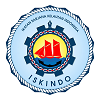A Comparison of Morphological Features Between Freshly Collected and Silica Beads-Dehydrated Macroalgal Samples in The Central Great Barrier Reef, Australia
Abstract
ABSTRACT
Accurate and reliable identification of macroalgae has a crucial role in a range of research relating to the interaction and function of macroalgae in reef ecosystems. The dependency on identifying macroalgae on fresh samples places severe constraints on conducting this research leading to potential biases due to the selection of sites either close to shore or in the vicinity of fully equipped research stations. Therefore, this study aimed to determine if could reliably be used silica bead-dehydrated samples to identify genera characteristics that are only visible in sectioned material. Fresh macroalgal samples were collected at Nelly Bay, compared to Magnetic Island. Materials and sections were to previously collect macroalgal samples and sections dehydrated in silica beads while in the field and reconstituted in filtered seawater for identification. Each sample was identified using histological sections supported with visual tools (photograph, herbaria). In this study, macroalgal identified samples from all species to genus with characteristic features recognizable within both fresh and reconstituted samples. No artifacts were present in reconstituted macroalgal samples compared to freshly collected samples. Therefore, it is suggested that using silica beads as a preservation field method for collecting and identifying macroalgal samples is a suitable and accurate alternative method to the use of fresh samples, which eliminates the time and distance constraints associated with fresh samples.
Keywords: Great Barrier Reef, Histological sectioning, Macroalgae identification, Silica-beads preservation, Reconstituted
Full Text:
PDFReferences
Baker, J., A. Walters, A. Futterer, L. McLean, D. Kinasz, J. Bowey, P. Moody, J. Baker-Johnson, M. Duncan and M. Chi (2019). Marine Hitchhikers of Yorke Peninsula." Results of field work: introduced, cryptogenic, tropical and opportunistic species.(Government of South Australia: Adelaide).
Boisnoir, A., P.-Y. Pascal, S. Cordonnier and R. Lemée (2019). Spatio-temporal dynamics and biotic substrate preferences of benthic dinoflagellates in the Lesser Antilles, Caribbean sea. Harmful Algae, 81, 18-29.
Chinain, M., C. Gatti, M. Roué and H. Darius (2019). Ciguatera poisoning in French Polynesia: Insights into the novel trends of an ancient disease. New Microbes and New Infections, 31, 100565.
Chinain, M., C. M. Gatti, M. Roué, H. T. Darius and D. Subba Rao (2020). Ciguatera-causing dinoflagellates in the genera Gambierdiscus and Fukuyoa: Distribution, ecophysiology and toxicology. Dinoflagellates: Morphology, Life History and Ecological Significance; Subba Rao, DV, Ed, 405-457.
Davies, S., M. H. Gamache, L. I. Howe-Kerr, N. G. Kriefall, A. C. Baker, A. T. Banaszak, L. K. Bay, A. J. Bellantuono, D. Bhattacharya and C. X. Chan (2022). Building Consensus around the Assessment and Interpretation of Symbiodiniaceae Diversity.
Fetscher, A. E., L. Busse and P. R. Ode (2009). Standard operating procedures for collecting stream algae samples and associated physical habitat and chemical data for ambient bioassessments in California. California State Water Resources Control Board Surface Water Ambient Monitoring Program (SWAMP) Bioassessment SOP 2.
Hallegraeff, G., D. Anderson and A. Cembella (1995). Manual on harmful marine microalgae, IOC Manuals and Guides No. 33.
Heimann, K. (2012). Marine Plants and Algae in their Environments: 2012 BZ5640 Practical Manual.
Jauzein, C., L. Açaf, S. Accoroni, V. Asnaghi, A. Fricke, M. A. Hachani, M. Chiantore, L. Mangialajo, C. Totti and I. Zaghmouri (2018). Optimization of sampling, cell collection and counting for the monitoring of benthic harmful algal blooms: application to Ostreopsis spp. blooms in the Mediterranean Sea. Ecological Indicators, 91, 116-127.
Kibler, S. R., E. D. Davenport, P. A. Tester, D. R. Hardison, W. C. Holland and R. W. Litaker (2017). Gambierdiscus and Fukuyoa species in the greater Caribbean: Regional growth projections for ciguatera-associated dinoflagellates. Ecological Modelling 360, 204-218.
Kohli, G. S., H. Farrell and S. A. Murray (2015). Gambierdiscus, the cause of ciguatera fish poisoning: an increased human health threat influenced by climate change. Climate Change and Marine and Freshwater Toxins. De Gruyter, 273-312.
Lim, W. Y. (2020). Influence of characteristics of marine macroalgae on feeding preferences of the milkfish (Chanos chanos) in Peninsular Malaysia/Lim Wai Yin, University of Malaya.
Nadarajan, S. (2011a). Assessing benthic dinoflagellate populations and macroalgal substrate preference between Keeper Reef and Lodestone Reef. Townsville, James Cook University.
Nadarajan, S. (2011b). Assessing benthic dinoflagellate populations and macroalgal substrate preference between Keeper Reef and Lodestone Reef.
Nakahara, H., T. Sakami, M. Chinain and Y. Ishida (1996). The role of macroalgae in epiphytism of the toxic dinoflagellate Gambierdiscus toxicus (Dinophyceae). Phycological Research, 44(2), 113-117.
Niedermaier, R. (2011a). Abundance of benthic toxic dinoflagellates and their prefered macroalgal substrates at to inshore reef sites in central Great Barrier Reef, Australia. Townsville, James Cook University.
Niedermaier, R. (2011b). Abundance of benthic toxic dinoflagellates and their prefered macroalgal substrates at to inshore reef sites in central Great Barrier Reef, Australia.
Parsons, M. L., A. L. Brandt, A. Ellsworth, A. K. Leynse, L. K. Rains and D. M. Anderson (2017). Assessing the use of artificial substrates to monitor Gambierdiscus populations in the Florida Keys. Harmful Algae, 68, 52-66.
Parsons, M. L., C. J. Settlemier and J. M. Ballauer (2011). An examination of the epiphytic nature of Gambierdiscus toxicus, a dinoflagellate involved in ciguatera fish poisoning. Harmful algae, 10(6), 598-605.
Rains, L. K. and M. L. Parsons (2015). Gambierdiscus species exhibit different epiphytic behaviors toward a variety of macroalgal hosts. Harmful Algae, 49, 29-39.
Rowan, G. (2022). An examination of the potential and limitations of optical remote sensing in monitoring submerged aquatic vegetation.
Turner, A., H. Poon, A. Taylor and M. T. Brown (2017). In situ determination of trace elements in Fucus spp. by field-portable-XRF. Science of the Total Environment, 593, 227-235.
DOI: https://doi.org/10.21107/jk.v15i2.14374
Refbacks

This work is licensed under a Creative Commons Attribution 4.0 International License.

Jurnal Kelautan by Program Studi Ilmu Kelautan is licensed under a Creative Commons Attribution 4.0 International License.
Published by: Department of Marine Sciences, Trunojoyo University of Madura













